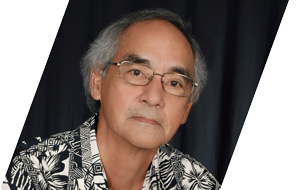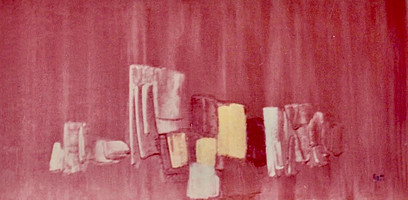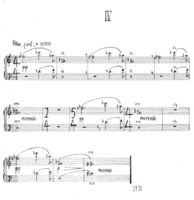
Less Is More: A New Path Taken
A Guide to Dennis Kam's Music.
By John Van der Slice.
Dennis Kam's later music could be impressionistic but rarely expressionistic, with little wallowing in emotional strife, deranged senses or fevered outbursts. He often could be playfully experimental but in general he was more of a neoclassicist with a predilection for unambiguous precision, clarity and rhetoric. Despite an avid curiosity about contemporary developments he felt conflicted regarding the angst-ridden, ivory tower attitude of much late-20th century European music. He had no feeling for labyrinthine pitch schemes and the novel sounds of extended instrumental techniques. These he saw as tending to confound the average listener with bewildering complexity and gratuitous cosmetics. He was an authentic practicing Christian whose soul-searching fed not only a passion for philosophy, but also a sense of responsibility toward his art and his audience. (His essay “In Pursuit of the Positive,” addresses this issue and can be found in Texts and Downloads/Other Articles.)
In 1968 a Columbia recording of Terry Riley's “In C” (1964) was released. The minimalism of Terry Riley (and later Steve Reich, among others) was an aesthetic reaction against modernism which offered an antidote: a limiting and simplifying which helped to focus and hold the listener's attention. Euphonious consonance replaced the sustained tension of dissonance. Relative quiet replaced strident loudness. Sustained sounds and extended repetitions replaced rhythmic complexity. Thus the fleeting pointillistic“moments” of Webern-influenced modernism could be arrested, tamed and expanded, enabling music to be leisurely absorbed, dwelled in and savored.
This had a major impact on Dennis Kam's composition, notably for the period of 1970-1972 during which he was the composer-in-residence under a Ford Foundation grant for the state of Hawaii. Dennis wrote much music during this time, providing ample opportunity for cultivation of a more personal and lasting style. Examples of this new aesthetic from 1971 are Several Times for piano and Mixed for three flutes, two clarinets, three trombones, piano and percussion. A unique example also from 1971 is Gagaku Impressions for wind ensemble which aptly channels the 1000 year old court orchestra tradition of Japan into a beautifully effective “minimalist” experience.
Listening examples
keyboard_arrow_downI suspect that the punctuative shock of the finite moment, which had been so compelling for Dennis, may have become for him a point of departure. Minimalism's repetition of limited materials could prolong and enhance a “moment” into a sustained, richly active process of self-confirming variety within tight organic unity: a music which seems to say “all is one, all is now.” This is arguably more associated with Far Eastern music traditions which stress ornamentation rather than the progressing narrative found in the West. It may be significant that Dennis was not a reader of novels nor was he what I would call a cinephile. He was more attracted to painting ...
...and his graphic sensibility can be seen in his handwriting and music calligraphy, both of which are distinctively artful.
Thus it should come as no surprise that instead of creating an evolving “story” in his music he was much more at home exploring and embellishing a unitary music “object,” presenting a variety of perspectives as when one scans a painting or circles around a solid piece of sculpture. He was born and raised on an island in the middle of the Pacific, an environment with little seasonal change. More often than not, one beautiful day followed another, something that may have contributed to his savoring of prolonged equilibrium.
Dennis had a philosophical interest in phenomenology and its emphasis on the palpable present. This interest along with his religious faith might explain his attraction to repetition both as extended focus as well as an existential “affirmation” of life, the latter expressed by the unambiguous and unwavering determination of clock-time pulsing staccatos, marcatos and pizzicatos. Thus the rocking repetitions (ostinati) along with recursively advancing scale fragments and optimistic climb of arpeggios could sketch an aural gestalt (usually involving stable pitch intervals) which seemed to paradoxically move ahead while always remaining in place. In much of his music there is little sense of the past becoming a future; it seems rather to remain in an eternal present.



